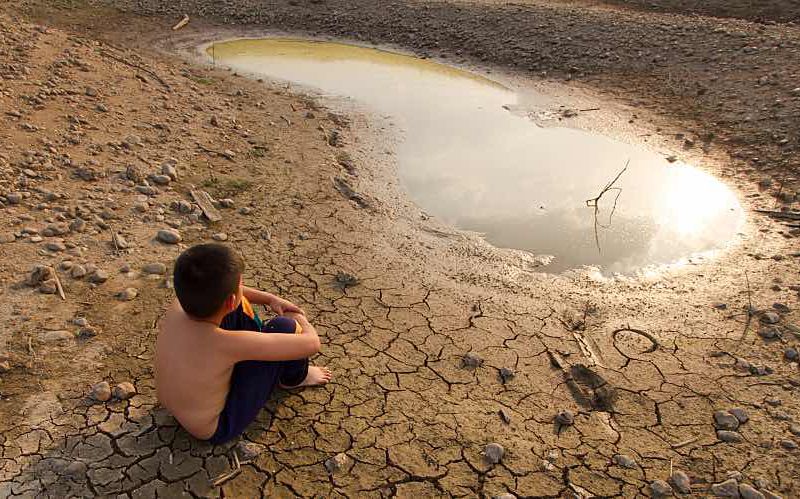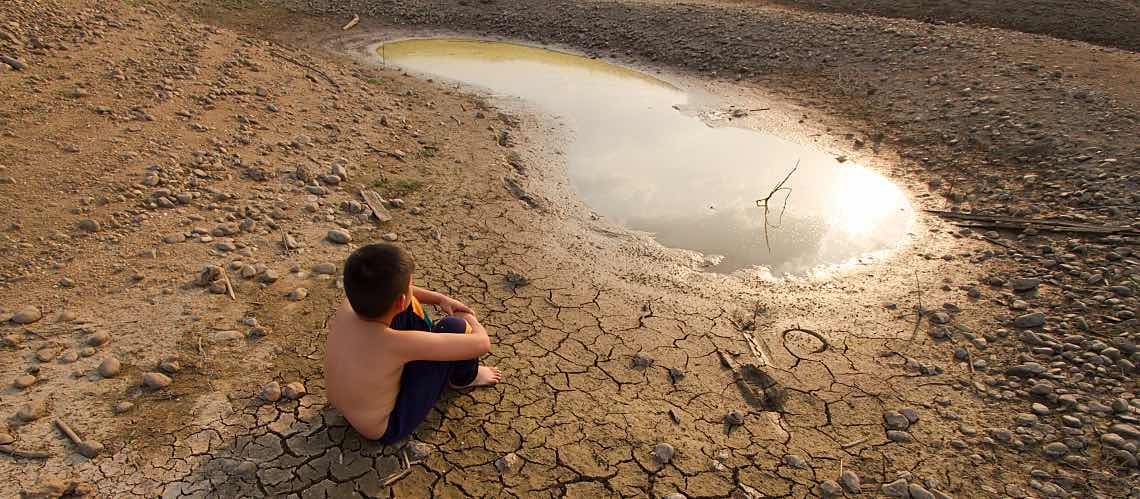How Climate Change Impacts Water Resources


The impacts of climate change are stunningly obvious in recent satellite imagery of Lake Mead from the National Aeronautics and Space Agency. The largest reservoir in the United States is now only 27% full, its lowest level since it was first filled in 1937. That's a critical concern: Lake Mead is the water source for 25 million people across seven states and a number of large agricultural valleys.
Rising global temperatures affect every aspect of our lives, from energy and transportation to agriculture and human health. Rising temperatures also determine the availability and quality of water and the integrity of the infrastructure that brings it to us. Going forward, these critical factors will be even harder to predict. Unless governments—federal, state, and municipal—act now, access to water and sanitation will continue to shrink.
Let's look at the impacts of climate change on water resources and responses that can help combat shortages.
Redefining the Water Cycle
The water cycle is a common childhood science lesson, but it's often taken for granted. Increasing global temperatures will change key portions of the cycle—and also change what we know about water sources.
More Rain and Flooding
Compared to a century ago, abnormally heavy precipitation events are both stronger and more frequent across the United States, according to the U.S. Global Change Research Program. That could mean inaccessible water sources, well pollution, damage to infrastructure, increased turbidity, and more waterborne diseases.

More Droughts
As droughts become more common, communities need more water, especially for agriculture. Higher temperatures cause greater evaporation, reduced water availability, and reduced river flows, while they increase the concentration of waterborne pathogens and toxins.
Sea Level Rise and Snowmelt
The average thickness of 30 landmark glaciers decreased more than 60 feet since 1980, while the area covered by sea ice in the Arctic has shrunk by about 40%, according to the National Oceanographic and Atmospheric Administration. Warmer temperatures thaw glaciers, snow, sea ice, and permafrost sooner and result in less ice growth in winter. That can change seasonal river flows and reduce summer water availability.
Snow is also melting earlier compared to long-term averages. For many in the western United States, snowpack is an important source of freshwater—but soon, it may be unreliable.
Availability Versus Predictability
Concerns about the impact of climate change on water resources don't just center on water availability, according to a 2022 study published in the Proceedings of the National Academy of Sciences. The increasing variability of water resources may be just as critical.
Water resources are predicted to fluctuate over the 21st century and become less predictable in regions across the Northern Hemisphere, according to the study, which was led by the National Center for Atmospheric Research (NCAR). Even if precipitation stays the same, streamflow may become more variable and unpredictable. The amount and timing of water availability will depend on periodic rain episodes.
The study shows the amount of water contained in snowpack could drop by almost 80% as snowpack becomes thinner and melts earlier in parts of the Rocky Mountains. Water managers won't have the four- to six-month lead time afforded by snowmelt and runoff. A predicted 45 additional days per year without snow and longer growing seasons will stress water resources.
Of course, the changes won't be uniform. The greatest impacts will occur in relatively warm mid-latitudes and high-latitude maritime regions influenced by sea ice. However, cutting greenhouse gas emissions could reduce these effects.
Infrastructure Demands
Countries around the world already face serious challenges to water and sanitation systems, according to the United Nations. Utilities and civil agencies planning projects such as new reservoirs must consider the changing characteristics of streamflow and snowpack. Ultimately, research like the NCAR study informs how society manages water resources.
National, state, and local governments must all implement possible measures to make communities and infrastructure more resilient to reduced water availability and water supply contamination. Each 1°C increase in the planet's temperature is projected to decrease renewable water resources by 20% and impact 7% more of the population, according to the Intergovernmental Panel on Climate Change.
But too often, governing bodies don't consider ways to integrate water and climate, leaving the interconnected challenges of drinking water, sanitation, and health unaddressed.
Response to a Warming World
The Columbia Climate School has created climate models to investigate and explore various scenarios to balance water supply and demand. Some of the strategies recommended by this research include creating additional water storage, increasing irrigation system efficiency, and selecting crops appropriate for the local climate. Wind and solar power projects also use less water than traditional power plants.
Private citizens play an important role by conserving water. That means taking shorter showers, fixing faulty plumbing, installing xerographic landscaping, and avoiding foods that require a lot of water to grow. That quarter-pound burger that looks so tempting? It requires 450 gallons of water to produce the beef.
Water utilities and test labs serve as trusted advisors to customers on how the warming climate affects water availability and quality. Whether you work with public drinking and wastewater systems, municipalities, private well owners, or agricultural producers, you can help safeguard water supplies and the communities that rely on them.
Water labs should prepare to manage an increasing number of samples as drought and floods become more common. If you haven't yet, work with other labs to establish emergency preparedness protocols that keep you both operating at full capacity. As climate change advances, you'll find that water testing—and your lab—are more essential than ever.






